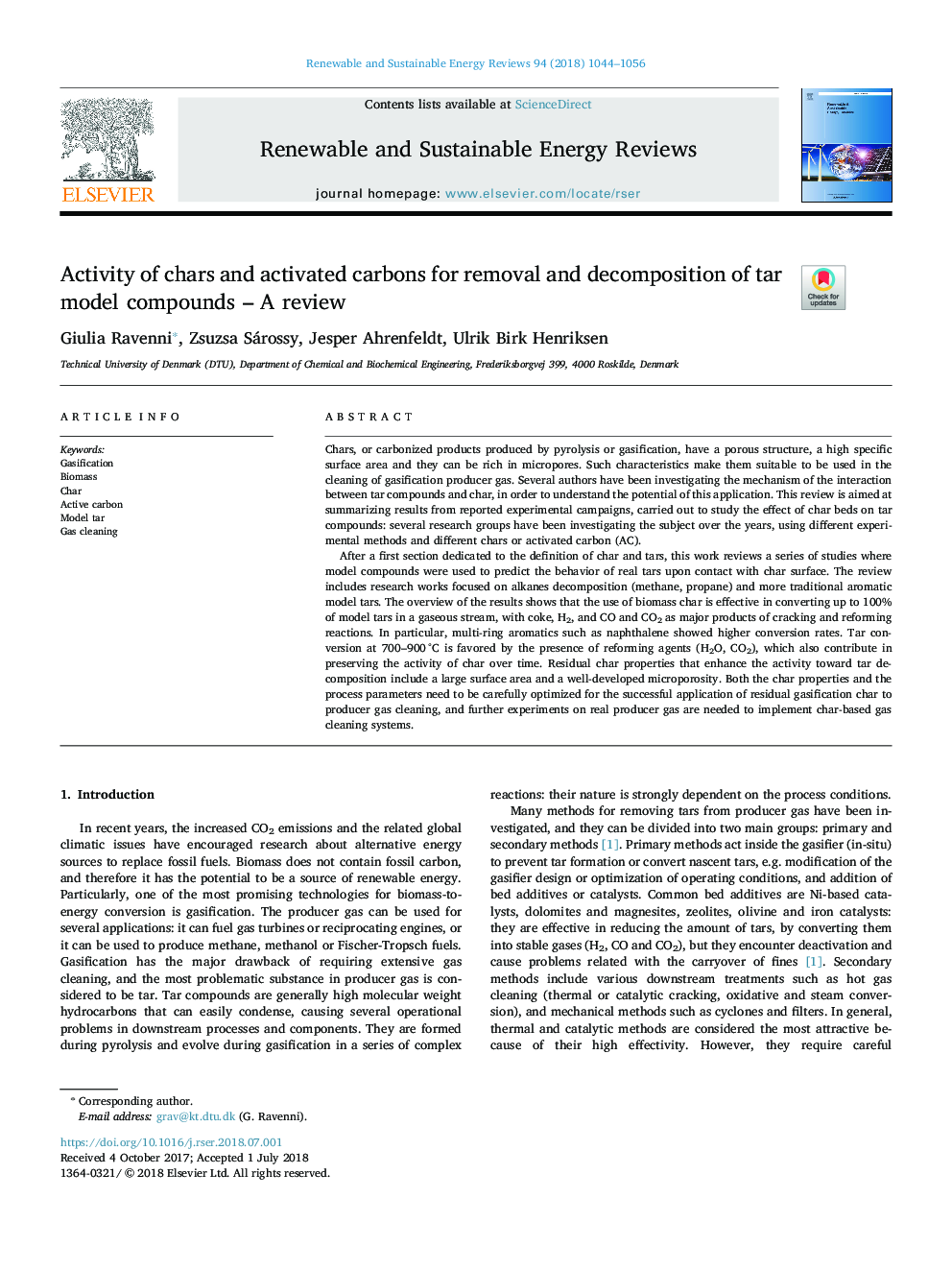| Article ID | Journal | Published Year | Pages | File Type |
|---|---|---|---|---|
| 8110600 | Renewable and Sustainable Energy Reviews | 2018 | 13 Pages |
Abstract
After a first section dedicated to the definition of char and tars, this work reviews a series of studies where model compounds were used to predict the behavior of real tars upon contact with char surface. The review includes research works focused on alkanes decomposition (methane, propane) and more traditional aromatic model tars. The overview of the results shows that the use of biomass char is effective in converting up to 100% of model tars in a gaseous stream, with coke, H2, and CO and CO2 as major products of cracking and reforming reactions. In particular, multi-ring aromatics such as naphthalene showed higher conversion rates. Tar conversion at 700-900â¯Â°C is favored by the presence of reforming agents (H2O, CO2), which also contribute in preserving the activity of char over time. Residual char properties that enhance the activity toward tar decomposition include a large surface area and a well-developed microporosity. Both the char properties and the process parameters need to be carefully optimized for the successful application of residual gasification char to producer gas cleaning, and further experiments on real producer gas are needed to implement char-based gas cleaning systems.
Related Topics
Physical Sciences and Engineering
Energy
Renewable Energy, Sustainability and the Environment
Authors
Giulia Ravenni, Zsuzsa Sárossy, Jesper Ahrenfeldt, Ulrik Birk Henriksen,
